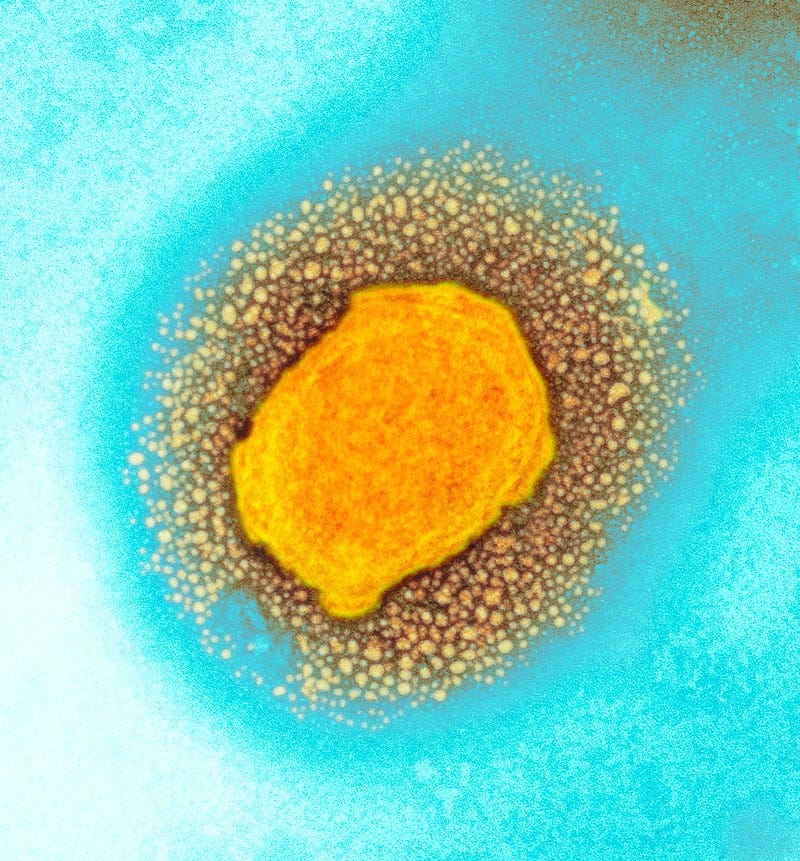Monkeypox: history and current events
Awareness is key, but there is no reason to panic
6 minute read
The Virus and the Disease:
Monkeypox is a zoonotic disease caused by an appropriately named orthopoxvirus: Monkeypox virus (MPXV). It is a relative of smallpox, in the family Poxviridae. It was first isolated in 1958 from a macaque, but was not discovered in humans until 1970, where an infant in the Diplomatic Republic of Congo presented with smallpox-like blisters. The animal reservoir for MPXV remains unclear, however despite its name, it is unlikely that monkeys are the primary reservoir. Rodents such as squirrels, dormice, and rats are more likely the natural reservoir for MPXV.

According to a 2022 review, there are 2 specific genetic clades of monkeypox circulating in the population: the Central African clade and the West African clade. Historically, most reported and suspected cases were the Central African clade by far. This clade is also associated with higher morbidity, mortality, and transmissibility than the West African clade.
Monkeypox is not easily spread from person-to-person, however once infected, the incubation period is 7-14 days (range 5-21) and the person is not contagious. During the prodromal phase, a person may present with fever, headache and fatigue and sometimes sore throat, cough, and lymphadenopathy (swollen lymph nodes). They may be contagious during this time. Following the prodrome, eruptions occur simultaneously in the mouth and all over the body. A person is contagious during all stages of the lesion progression, and each stage (enanthem, macular, papular, vesicular, pustular, and crusted scab). The lesion phase of the disease usually lasts a few weeks from enanthem to scab stage. As with other poxviruses, pitted scabbing is a common long-term sequelae from monkeypox infection. Additional complications include: vomiting, diarrhea, conjunctivitis and corneal scarring, sepsis, encephalitis, and bronchopneumonia. The case fatality rate is estimated between 1-10% and varies significantly between clades. According to a 2022 review which analyzed data from 28 peer reviewed articles and 10 grey articles, the case fatality rate across both clades and all countries is estimated to be 8.6%. The Central African clade fatality rate was determined to be 10.6% which is significantly higher than the West African clade at 3.6%.
Background & Epidemiology:
The incidence rate of monkeypox has been steadily increasing since 1970.
Keep reading with a 7-day free trial
Subscribe to Unbiased Science to keep reading this post and get 7 days of free access to the full post archives.

